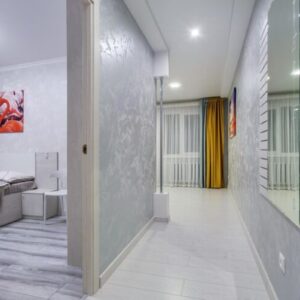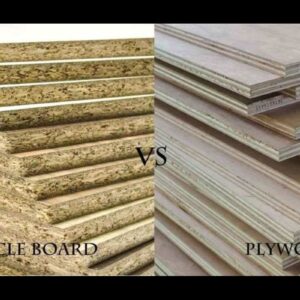
The concept of energy-efficient homes has emerged as a cornerstone of a sustainable future. As the world grapples with environmental challenges and the need for responsible living, the focus on creating homes that minimize energy consumption has gained significant traction. In this article, we will delve into the various aspects of energy-efficient homes, exploring their significance, key features, benefits, and the role they play in shaping a sustainable future.
Understanding Energy-Efficient Homes
Energy-efficient homes are designed to maximize energy performance, minimize waste, and reduce overall energy consumption. These homes incorporate a range of technologies, materials, and construction techniques aimed at optimizing energy usage for heating, cooling, lighting, and appliances. The fundamental principle is to create a living space that requires less energy input while providing a comfortable and sustainable environment for its occupants.
Key Features of Energy-Efficient Homes
1-Effective Insulation:
Energy-efficient homes boast superior insulation to regulate temperature and reduce the need for excessive heating or cooling. High-quality insulation materials, such as fiberglass or foam, are strategically placed in walls, roofs, and floors.
2-Energy-Efficient Windows and Doors:
Specialized windows with multiple panes, low-emissivity coatings, and energy-efficient frames contribute to minimizing heat loss or gain. Similarly, energy-efficient doors prevent drafts, ensuring optimal temperature control.
3-Energy-Efficient Appliances:
These homes are equipped with appliances that bear the ENERGY STAR label, signifying compliance with energy efficiency guidelines. Appliances that consume less energy result in lower utility bills.
4-Solar Panels and Renewable Energy Sources:
Many energy-efficient homes leverage solar panels to harness renewable energy from the sun. Additionally, they may incorporate other renewable sources such as wind or geothermal energy for power generation.
5-Smart Home Technology:
Energy-efficient homes often integrate smart home systems for automated control of lighting, heating, and cooling. Smart thermostats, lighting systems, and energy monitoring devices empower homeowners to optimize energy usage.
Benefits of Energy-Efficient Homes
1-Cost Savings:
One of the primary advantages of energy-efficient homes is the potential for significant cost savings. By reducing energy consumption, homeowners experience lower utility bills, offering a tangible economic benefit.
2-Environmental Impact:
Energy-efficient homes contribute to the reduction of greenhouse gas emissions and environmental degradation. By relying on renewable energy sources and minimizing energy waste, these homes play a crucial role in mitigating climate change.
3-Increased Property Value:
The demand for energy-efficient homes is on the rise, and as a result, they often command higher resale values. Homebuyers are increasingly recognizing the long-term savings and sustainability benefits associated with these properties.
4-Enhanced Comfort:
Effective insulation, windows, and smart climate control systems contribute to a more comfortable living environment. Homes maintain consistent temperatures, eliminate drafts, and ensure a healthier indoor atmosphere.
5-Government Incentives:
Various governments worldwide offer incentives and rebates for homeowners who invest in energy-efficient upgrades. These can include tax credits, subsidies, or favorable financing options, making it more financially feasible for homeowners to embrace sustainable practices.
The Role of Energy-Efficient Homes in Shaping a Sustainable Future
1-Reducing Carbon Footprint:
As the global community grapples with the imperative to reduce carbon emissions, the adoption of sustainable practices stands as a tangible solution. By minimizing reliance on traditional energy sources, these initiatives contribute significantly to lowering the overall carbon footprint.
2-Promoting Sustainable Practices:
Energy-efficient homes serve as models for sustainable living. Their design and features inspire homeowners to adopt eco-friendly practices, influencing a broader cultural shift towards responsible and sustainable living.
3-Setting Industry Standards:
4-Global Impact on Energy Demand:
If the majority of homes transition to sustainable practices, the cumulative impact on global energy demand would be substantial. This reduction in demand could alleviate pressure on traditional energy sources and promote a more balanced and sustainable energy ecosystem.
Conclusion:
Energy-efficient homes represent a pivotal step towards a sustainable future. Beyond the immediate benefits of cost savings and enhanced comfort, these homes play a crucial role in mitigating climate change, reducing environmental impact, and setting new standards for responsible living. As technology advances and awareness grows, the integration of energy-efficient features in homes will likely become the norm rather than the exception. Embracing energy efficiency is not just a choice for homeowners; it is a collective responsibility towards shaping a more sustainable and resilient future for generations to come.
Frequently Asked Questions (FAQs)
Q1:What defines an energy-efficient home?
Ans: An energy-efficient home is characterized by its ability to maximize energy performance while minimizing waste and overall energy consumption. It incorporates features such as effective insulation, energy-efficient appliances, renewable energy sources, and smart home technology to achieve optimal energy usage.
Q2:How do energy-efficient homes contribute to cost savings?
Ans: Energy-efficient homes reduce energy consumption, resulting in lower utility bills for homeowners. By utilizing technologies and features that minimize energy waste and reliance on traditional energy sources, these homes offer significant long-term cost savings.
Q3:Are there government incentives available for energy-efficient home upgrades?
Ans: Yes, various governments worldwide offer incentives and rebates to encourage homeowners to invest in energy-efficient upgrades. These incentives may include tax credits, subsidies, or favorable financing options, making it more financially feasible to embrace sustainable practices.
Q4:What are some key features to look for in an energy-efficient home?
Ans: Effective insulation, windows and doors, ENERGY STAR-rated appliances, solar panels or other renewable energy sources, and smart home technology are essential features of energy-efficient homes. These elements work together to minimize energy consumption and enhance overall sustainability.
Q5:How can energy-efficient homes contribute to environmental sustainability?
Ans: Energy-efficient homes reduce greenhouse gas emissions and environmental degradation by minimizing energy waste and reliance on fossil fuels. By harnessing renewable energy sources and adopting eco-friendly practices, these homes play a crucial role in mitigating climate change and promoting environmental sustainability.






